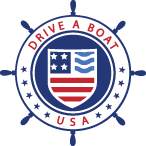Boating Buoys and Markers: Red & Green Buoy Meanings
Buoys, beacons and markers are types of navigation aids, also called Aids to Navigation or ATONs. They are the boating equivalent of road signs: human-made objects that can be used to determine safe course and follow the rules while driving a vessel.
Here we’ll break down the difference between lateral and non-lateral markers, and take a look at some common buoys and beacons. It takes some time and experience to read them effectively, so be prepared to look at this information more than once. You should also keep in mind that there are many types of signals that are not described below.
To get a solid grip on the most important information you need for safe boating, take a safe boating course and get your US boating license with Drive A Boat USA!
Types of Aids to Navigation
The U.S. Aids to Navigation System of markers and signals is meant to be used along with nautical charts. You should never count on navigation aids alone to guide you, as they can sometimes stray from their charted positions, and may also not display the right information at a given moment. They are meant to guide boaters if they have no other information they can rely on.
The term “aids to navigation” includes all the visible and audio signals and tools that the U.S. Coast Guard has established to help boaters navigate safely. In this article, we will look at lateral and non-lateral navigation aids, and the most common types of markers: buoys and day beacons.
Lateral navigation aids
The Lateral system is also called the “red right returning” system. According to this set of rules, when returning from sea on navigable waters:
- Red even-numbered markers will be on the starboard (right) side of the channel
- Green odd-numbered markers will be on the port (left) side.
The numbers on these markers increase as you travel from the sea toward the harbor. If you’re without a compass and become disoriented, you can always tell you’re heading upstream by looking at the buoy numbers, as they will grow larger as you move.
Lateral markers define the edges of safe water channels and indicate which side to pass them on when traveling in the conventional direction of buoyage.
These are the main types of lateral markers:
Port-side aids
- Red in color (in IALA Region A)
- Can-shaped buoys
- Square-shaped daymarks
- Odd numbers
- Red flashing light (when lit)
Starboard-side aids
- Green in color (in IALA Region A)
- Cone-shaped or nun-shaped buoys
- Triangle-shaped daymarks
- Even numbers
- Green flashing light (when lit)
Bifurcation or junction buoys
- Colored with horizontal red and green bands, where the preferred channel is indicated by the color of the top band
- Indicate where a channel splits
- The color on top indicates the preferred channel
Fixed lateral markers
- Poles, pilings, or other fixed structures
- Colored and shaped like their buoy counterparts
- May have lights
Lighted markers
- Can be fixed or floating
- Display flashing lights in the appropriate color (red or green)
- Light patterns help identify specific markers
Daymarks
- Fixed markers without lights
- Distinctly shaped and colored panels attached to poles or structures
Non-lateral navigation aids
Non-lateral markers give information that is not related to the edges of safe water areas.
They provide important information to boaters about various conditions, regulations, and potential hazards on the water, complementing the lateral marking system used for channel navigation.
Examples of non-lateral markers include:
Safe water markers
- Also known as mid-channel, fairway, or sea buoys
- White with red vertical stripes
- Indicate unobstructed water on all sides
- Can be passed on either side
- Often mark the beginning of a channel when approaching from offshore
Special purpose buoys
- Solid yellow in color
- Mark areas like anchorages, traffic separation zones, or underwater cable areas
Danger buoys
- White with an orange diamond shape
- May indicate specific hazards like rocks, wrecks, or shoals inside the diamond
Control buoys
- White with an orange circle
- Indicate regulations like speed limits, no wake zones, or anchoring restrictions
Information buoys
- White with an orange square
- Display information about directions, distances, or locations
Cardinal buoys
- Indicate the safest side to pass a danger and are used when the conventional direction of buoyage may be unclear.
Mooring buoys
- White with a blue horizontal band
- Used for tying up boats in designated areas
Obstruction markers
- Black and white vertical stripes
- Indicate obstructions between the marker and shore
Diving markers
- Blue and white flag (on a vessel)
- Red and white flag (on a buoy)
- Indicate diving activity in the area
Beacons and buoys
Beacons and buoys are the most common types of navigation aids.
Beacons
Beacons are fixed navigational aids designed to guide vessels and warn of potential hazards. They are typically placed on land or fixed structures in the water, such as poles or platforms. Day beacons are unlighted structures visible only during daylight hours. Lighted beacons are equipped with lights for nighttime visibility.
Buoys
Buoys are typically brightly colored, floating objects anchored to the bottom of a body of water. They can include lights, reflective materials, sounds (bells or whistles), or specific shapes to convey information.
Buoys can be either lateral markers or non-lateral markers, depending on their specific purpose and design.
Discover what you need to know about safe boating at Drive A Boat USA!
All boaters need to know the rules of the road and other safe boating rules and regulations to go out on the water legally in the United States. When you take the test to get your state-approved boating license, you show that you know all about driving a boat safely and following the law.
Boaters in New York, California, Florida and other states can earn their boater card online from Drive A Boat USA!
Take our approved Boater Safety Course and learn about:

